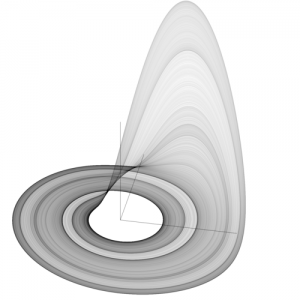 A few days ago, a friend asked me a few questions about related rates problems. They are currently trying to get a better understanding of the concepts being taught in their calculus class, and knowing that I have a degree in engineering (automatically making me a math expert), they assumed that I would be able to offer immediate help and provide vast amounts of understanding and insight.
A few days ago, a friend asked me a few questions about related rates problems. They are currently trying to get a better understanding of the concepts being taught in their calculus class, and knowing that I have a degree in engineering (automatically making me a math expert), they assumed that I would be able to offer immediate help and provide vast amounts of understanding and insight.
Unfortunately the truth is a little more realistic. It is indeed true that I am an engineer, and also true that I have successfully completed years of advanced math courses. It is also true that I don’t employ the concepts learned on a daily basis and that “use it or [it will be relegated to the dark corners of the mind]” also applies. The fact is as follows: I haven’t explicitly used related rates in the past two years (though I have employed many theorems built upon the foundation of differential calculus). My first thought when asked? “Related rates… uh, I don’t remember those.” Fortunately Wikipedia came to the rescue with a nice brain-jogging overview.
After sitting down to analyze a few sample problems, I realized that in the brief time since I last did math homework, I had forgotten many important math principles. Fortunately I still remember how to add and subtract, but principles such as the chain rule (remember our old friends fog and gog?) had slipped my mind. Problems that should be simple ended up requiring a thirty minute review of the basics of differentiation. Thankfully, after about an hour of contemplation, I was able to solve the sample problems and drag some of those math skills (kicking and screaming, of course) from the dusty corners of my mind. Once I was able to do that, I was then able to create a plausible explanation of the concepts for my friend. I have yet to formulate an excuse as to why I did not know all the answers instantaneously.
In case you were wondering, related rates problems are called related rates because the rates are, well… related. All problems will center around a known rate (or derivative, dx/dt) and an unknown rate (dy/dt), some sort of equation that relates the known rate to the unknown rate for which you must solve (the Pythagorean theorem seems to be a favorite). Thus, all problems should reduce to something in the form of “dy/dt = a** dx/dt” where a is simply a constant multiplier that relates the known rate to the unknown rate. The only things that should change is the value of a, which could be positive or negative (and actually working through the steps to solve the problem is the simplest way to discover the sign and value of a*). Of course, your problem could use completely different variables then x, y, and t… but the premise is the same.
I’m sure that didn’t make any sense, and I also do not have any facility on my site for displaying nicely formatted equations, so I apologize but I’m not going to torture you with a step-by-step walk through with textual representations of the math. The Wikipedia page on related rates is handy, as is a quick review of implicit differentiation (also try a google search). Oh and the image at the top of the post has nothing to do with related rates… but it does have something to do with differential equations (read about it here). And as usual, if you have comments or questions, use the comment form and we can start a math discussion!